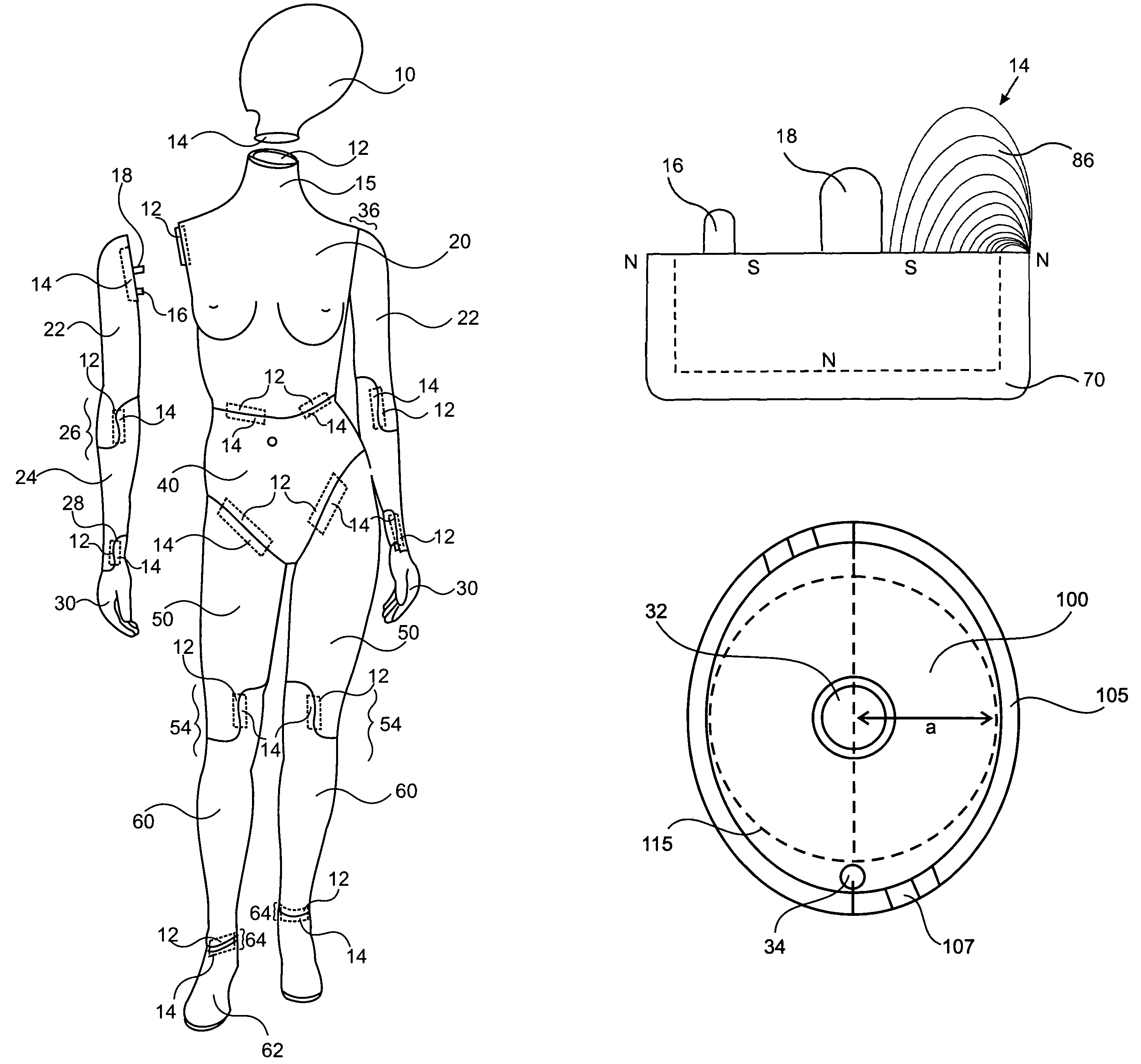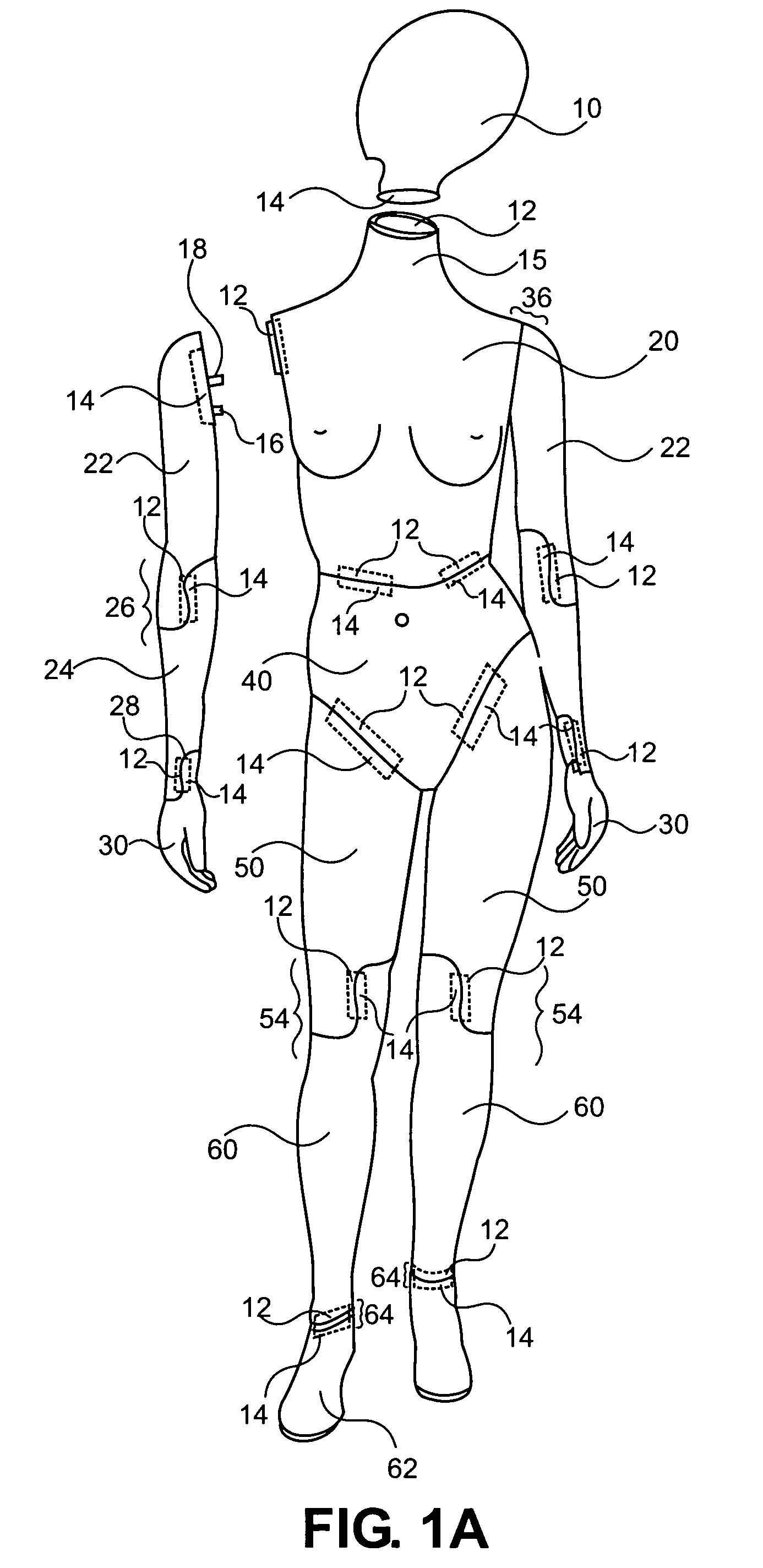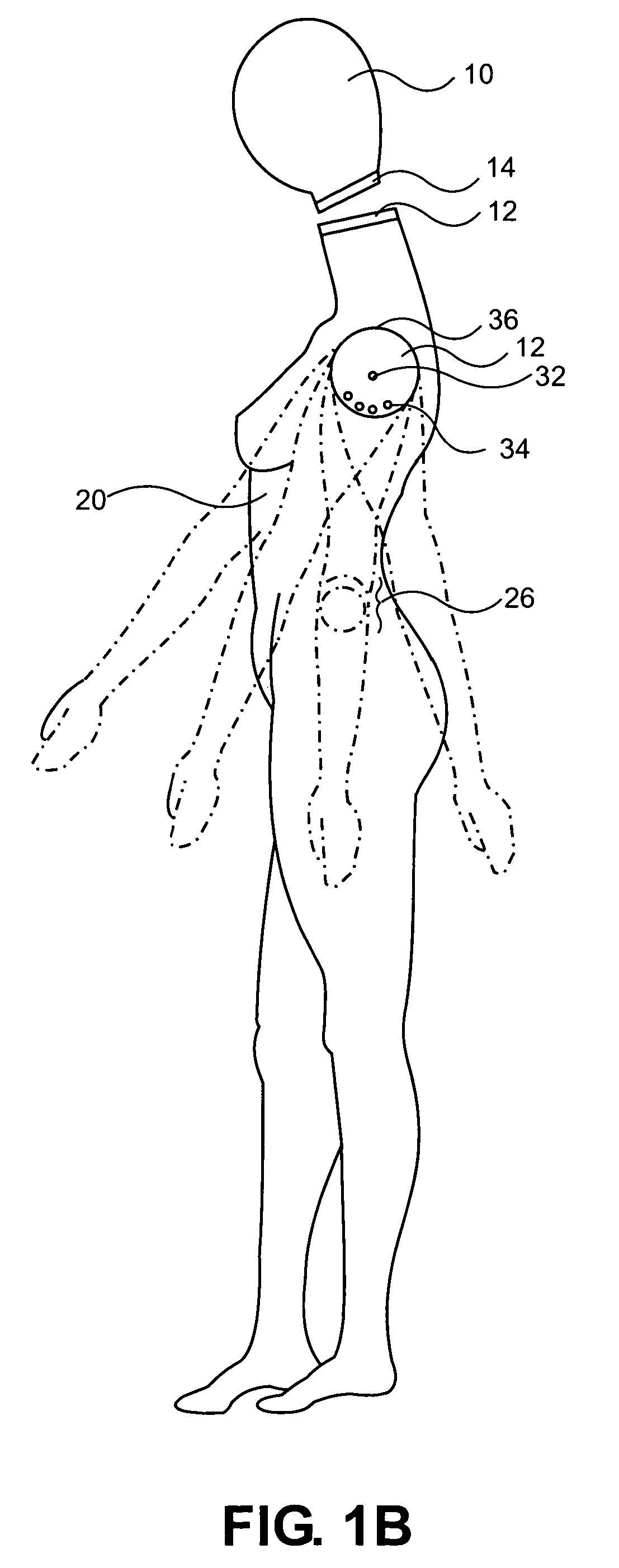Display form having magnetically attachable parts
a technology of magnetic attachment and display form, which is applied in the direction of rod connection, dolls, instruments, etc., can solve the problems of heavier and more costly joints, and achieve the effects of reducing the leakage of magnetic force, facilitating dressing, and reducing the risk of slipping
- Summary
- Abstract
- Description
- Claims
- Application Information
AI Technical Summary
Benefits of technology
Problems solved by technology
Method used
Image
Examples
example 1
[0074]The on-contact and depth-of-pull strengths of magnetic assemblies of this invention were tested and compared to those of conventional sandwich magnets using a gauss meter. FIGS. 9A and 9B show the points where the measurements were taken. FIG. 9A shows the magnetic assembly of this invention with the poles labeled N (north) and S (south). The asterisk 90, positioned about one-fourth inch from the center of the 2.5-inch-diameter magnetic assembly, indicates that the strongest depth-of-pull force was measured at this distance from the center. The circle 92 on the perimeter of the pole piece 70 indicates that the strongest on-contact force is measured at the perimeter. FIG. 9B shows a sandwich magnet of the prior art. The asterisk 94 indicates where the strongest depth-of-pull forces were measured. This point also corresponds to circle 96, the point where the strongest on-contact forces were measured. The magnet of this invention weighed 0.581 pounds. The sandwich magnet weighed ...
example 2
[0077]The on-contact and depth of pull strengths of a magnetic assembly as shown in FIGS. 8A and 8B were measured using a gauss meter, and are shown in Table 3. The strongest point on the magnet was measured at 3 / 32″ (± about 1 / 32″) from the center of the magnet. The depth-of-pull forces were measured at this same location. This magnetic assembly began to “seek home” at a distance of about ¾.″ The weight of the magnet was about 0.03 lb.
[0078]
TABLE 3Distance from MagnetNeodymium Cup AssemblyStrongest contact on Pole1500 gaussPieceStrongest Point on Magnet2990 gauss 1 / 32inch2800 gauss⅛inch2000 gauss¼inch1550 gauss½inch 680 gauss¾inch 338 gauss1inch 178 gauss
PUM
 Login to View More
Login to View More Abstract
Description
Claims
Application Information
 Login to View More
Login to View More - R&D
- Intellectual Property
- Life Sciences
- Materials
- Tech Scout
- Unparalleled Data Quality
- Higher Quality Content
- 60% Fewer Hallucinations
Browse by: Latest US Patents, China's latest patents, Technical Efficacy Thesaurus, Application Domain, Technology Topic, Popular Technical Reports.
© 2025 PatSnap. All rights reserved.Legal|Privacy policy|Modern Slavery Act Transparency Statement|Sitemap|About US| Contact US: help@patsnap.com



